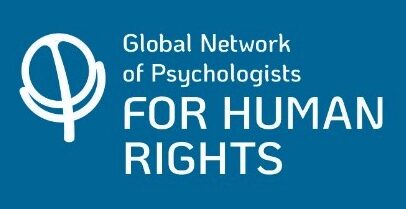Commemorating the Holocaust, Confronting the Legacy of Eugenics in Psychology
Marius Turda
Marius Turda is Professor of Biomedicine at Oxford Brookes University and Director of its Centre for Medical Humanities. He is the curator of a travelling exhibition entitled ‘We Are Not Alone’: Legacies of Eugenics (www.confront-eugenics.org)
Each year, on 27 January, we commemorate the liberation of Auschwitz-Birkenau. Perhaps the most infamous of the sprawling Nazi network of concentration and extermination camps, Auschwitz epitomises extreme violence, barbarity, dehumanisation and systematic murder more than any other site of genocide during the Holocaust. The Nazi programme of extermination resulted in the death of around eleven million people of diverse ethnic backgrounds, of whom six million were Jews.
Decades of anti-Semitism and racism paved the way to Auschwitz, but other cultural, political and scientific developments had contributed as well, including colonialism, nationalism and eugenics, the belief that it is possible to improve the quality of future human generations through selective breeding.
While not originating in Nazi Germany, eugenics is inextricably linked to it. Most people, if asked what they know about eugenics, would probably refer to Nazi programmes of compulsory sterilisation, human experimentation, and euthanasia. Nazi Germany’s eugenic determination to ‘purify’ the race and society of its ‘undesired’ members astonishes us to this day with its combination of sheer brutality, careful planning and, certainly in some respects, public support.
Anti-Semitism, racism and eugenics were closely intertwined. During the late nineteenth and early twentieth centuries, the impetus and motives for these movements sprang from the same strategy: to preserve the cultural supremacy of indigenous Europeans while, at the same time, restoring a biological vitality that had been allegedly undermined by the rising miscegenation and self-inflicted physical and mental degeneration associated with alcoholism, prostitution, and poverty. Viewed through the lens of the anti-Semitic thinking of the time, the nation’s biological body was under the constant threat of degeneration, allegedly resulting from the presence of and mixing with Jews, who were often described as an ‘inferior race’. Anti-Semitism and racism became widespread in all European countries after 1900, and particularly so as a result of the First World War. And so did eugenics.
During the interwar period, eugenics connected the notion of collective welfare with individual responsibility towards the nation and race. In Germany, these eugenic anxieties about the future of the race were translated onto the geo-political context of post-Versailles Europe, and further strengthened by the rise of Nazism in the early 1930s. Nazi elites were obsessed with the mission of creating a rejuvenated German nation that would be culturally, spiritually and racially homogeneous. To achieve its goals, the Nazi state resorted to coercive eugenic measures such as the sterilisation of people who were ‘hereditarily diseased’, followed by the murder (euphemised as ‘mercy killing’ or euthanasia) of mentally disabled children, later expanded to include mentally and physically disabled adults. Official Nazi propaganda instilled the need to ‘purify the race’ of Jews, Roma, Sinti, and Afro-Germans alongside the eugenic necessity of eliminating ‘defectives’ from society. They were ‘lebensunwertes Leben’: lives deemed ‘unworthy of life’. The Holocaust was to offer a ‘final solution’, the final carefully choreographed act in the unfolding of this racist and eugenic utopia.
Psychologists bear a great deal of responsibility for the widespread influence of eugenics.They added medical credibility to the by then popular view that society needed to be protected from the growing numbers of those they labelled ‘unfit’, ‘feebleminded’, ‘dysgenic’ and ‘sub-normal’ due to their physical and mental disabilities. The life of an individual deemed hereditarily valuable was prioritised, while a host of measurements and tests were introduced and applied to demonstrate the intellectual inadequacy and reproductive worthlessness of individuals deemed less so. They were described and diagnosed according to what psychologists argued were ‘objective’ methods capable of explaining the intellectual and developmental variations between individuals, particularly during childhood and adolescence. The scientific expertise thus provided by psychologists was used to stigmatise, marginalise and ultimately dehumanize those whose lives they controlled and supervised.These individuals who were seen as representing a different, and less-able, humanity were to be institutionalised in ‘ special schools’ and ‘colonies’ and subjected to specific educational programmes.
Unfortunately eugenics did not simply vanish after the Holocaust. It remained deeply embedded in post-World War II debates on education, social welfare, public health, and human rights. Racial, social, and cultural boundaries between ‘eugenically valuable’ individuals and those considered otherwise remained solid and were often reinforced through legislation, medical institutionalisation, and state-sanctioned policies of segregation. Eugenic speculations about social norms, cultural, ethnic and gender differences, and intellectual achievement continued to undergird various social, economic, and educational policies around the world. In psychology, eugenics continued to exert its influence, largely unaffected by the role that many psychologists had played in providing scientific credibility to racist policies before and during the Holocaust.
Looking back at the liberation of Auschwitz, we continue to have to ask ourselves: how could the Holocaust happen and why? How could millions of people tolerate anti-Semitism and racism? The answers to these questions have changed and will continue to change over time. Other questions demand answers too. For instance: how did academic disciplines such as psychology fall under the sway of eugenic theories? Without exposing the discipline’s own controversial engagement with eugenics, no satisfactory answers can be provided.
As we commemorate the Holocaust, we continue to fight for racial equality and social justice.This is why we need also to try to understand past and present ideas of eugenics. We must confront and expose their legacies in order to move forward. Human rights everywhere must be respected and no discrimination against people belonging to religious, ethnic, and sexual minorities, or of those living with disabilities, should be tolerated. Healing the deep wounds inflicted by eugenics requires public recognition of those wronged by psychologists in the past so that we can prevent mistreatment in the present. This sets us on a pathway to develop new ways of thinking and treating each person with dignity and respect equal to others.
Further readings:
https://wienerholocaustlibrary.org/2021/07/26/reflecting-on-the-legacies-of-eugenics/
https://www.tandfonline.com/doi/full/10.1080/01419870.2022.2095222?tab=permissions&scroll=top
Cover Photo: Hartheim Castle, one of the first 6 gas chambers established as part of the Nazi T4 Euthanasia Program in 1939. See https://www.schloss-hartheim.at/en/memorial-exhibition/memorial

